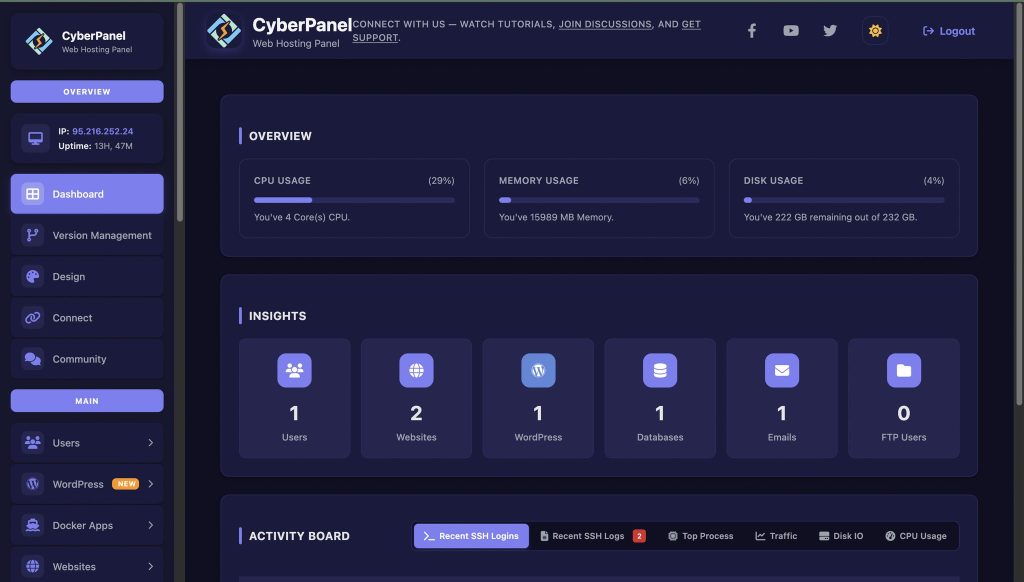Remote desktop applications have come a long way from traditional screen-sharing. One of the most versatile and high-performing tools available today is Parsec Linux, which is perfect for low latency streaming and gaming. As dev and linux users are already aware, you can do most things remotely using other services, including working collaboratively on design projects, or working off of cloud hardware—but what makes Parsec ideal for problems of engaging with powerful cloud H/W and a weak internet connection?
This article will discuss Parsec for Linux, how to utilize Parsec Linux, install Parsec on Linux, and configure it. It will also provide you with what you need to perform cases with Parsec Linux and keys to ensure optimal performance on a Linux Machine. Finally, you will learn what the difference is between a Parsec Linux host and client and how those compare to other remote desktop solutions.
What is Parsec for Linux?
Parsec for Linux is an optimized remote desktop and game streaming application that enables you to stream audio and video from one computer to another with extremely low latency. Unlike traditional remote desktop software, Parsec offers a proprietary networking protocol and utilizes hardware-accelerated video encoding to create a remote connection that feels nearly local.
Parsec supports a number of Linux distributions such as Ubuntu, Fedora, Arch Linux, and Debian. You can use it to play games, remote access, media editing, or even use it for professional 3D rendering.
How Does Parsec Work on Linux?
Parsec’s technology relies on a peer-to-peer (P2P) connection from your host computer (where the game is running or the application is running) to the client computer (the device you are connecting from).
- Verbiage regarding its workflow.
- The host encodes a video stream in real-time using your GPU.
- The stream gets sent via encrypted P2P networking to the client.
- The client instantaneously decodes the stream and sends mirrored user input back to the host.
This makes Parsec Linux perfect for cloud gaming, remote creative workflows, or accessing high-end hardware from a lightweight Linux machine.
Get exclusive access to all things tech-savvy, and be the first to receive
the latest updates directly in your inbox.
How to Install Parsec on Linux
Installing Parsec on Linux depends on your distribution. Let’s break it down step-by-step.
1. Install Parsec via .deb or .AppImage (Ubuntu/Debian)
wget https://builds.parsec.app/package/parsec-linux.deb
sudo apt install ./parsec-linux.deb
Or, use the AppImage version (no installation required):
chmod +x parsec.AppImage
./parsec.AppImage2. Install Parsec on Arch Linux
Arch users can install it via AUR:
yay -S parsec-bin3. Install Parsec on Fedora or RHEL
sudo dnf install parsecOnce installed, launch Parsec and sign in using your account credentials. You can then connect to your host machine or invite others to join.
How to Set Up Parsec as a Linux Host
To use Parsec Linux host mode, your system must meet specific GPU and driver requirements.
System Requirements
| Component | Minimum Requirement |
|---|---|
| OS | Ubuntu 22.04+, Fedora 38+, Arch Linux |
| CPU | Intel i5 or AMD Ryzen 5 |
| GPU | NVIDIA GTX 1060+ (NVIDIA Driver 510+) |
| Network | Minimum 20 Mbps upload/download |
| Memory | 8 GB RAM |
How to Turn on Host Mode
- Open Parsec on your Linux computer.
- Click on Settings → Host and enable “Host this computer.”
- Change the resolution, bandwidth, and frame rate based on your internet speed.
- Send your host link to your friend, or remote into the host from your client device.
Parsec Linux Host versus Client
The difference between Parsec Linux host and client is quite easy to explain:
- Host = The computer that is sharing its display and resources (usually your gaming PC)
- Client = A computer that connects to the host remotely (for example, your laptop, or another Linux computer).
You can do both roles on Linux based on the way you would like to work. For example, a cloud-hosted Ubuntu VM as a host while your local Linux Mint works as a client.
Why Use Parsec Linux for Gaming and Streaming
Low Latency: With Parsec’s proprietary protocol, enter a gaming session with practically no input lag.
Cross-Platform: Play Windows games from a Linux computer using Parsec.
Cloud – Gaming Ready: Connect to a virtual machine from AWS, Paperspace, or Shadow as an example.

Collaborative Workflows: As a developer, designer, and video editor, Parsec is perfect for remote work.
Hardware Acceleration: Uses NVIDIA NVENC or AMD VCE for a smooth streaming experience.
How to Install Parsec on Linux Mint
Installing Parsec on Linux Mint follows the same process as Ubuntu since Mint is Ubuntu-based.
wget https://builds.parsec.app/package/parsec-linux.deb
sudo apt install ./parsec-linux.deb
After installation, open the Parsec app from the applications menu, log in, and start your session.
Parsec Linux Performance Tips
To get the best streaming performance, you should optimize your system as follows:
- Enable GPU Encoding: Make sure NVIDIA or AMD drivers are correctly installed.
- Adjust Bitrate: Use 20–30 Mbps for full HD or 50 Mbps+ for 4K streaming.
- Use Ethernet: Avoid Wi-Fi for consistent latency-free streaming.
- Optimize Resolution: Set host and client resolutions to match for sharper visuals.
- Disable Compositing: Turn off desktop effects that add rendering overhead.
Linux Parsec Commands for Troubleshooting
Here are a few terminal commands for you to manage Parsec on Linux effectively:
To Check Versions:
parsec --versionTo Reset Settings:
rm -rf ~/.parsecTo View Logs:
cat ~/.parsec/log.txtTo Reinstall Parsec:
sudo apt remove parsec && sudo apt install ./parsec-linux.deb
Parsec vs Other Remote Desktop Tools
| Feature | Parsec | AnyDesk | TeamViewer | Moonlight |
|---|---|---|---|---|
| Latency | <10 ms | 30–50 ms | 50–70 ms | <10 ms |
| GPU Acceleration | Yes | Partial | No | Yes |
| Gaming Support | Excellent | Poor | Poor | Good |
| Cost | Free / Pro | Free / Paid | Paid | Free |
| Platform Support | Windows, macOS, Linux | All | All | Limited |
Hosting Parsec on Cloud with CyberPanel

CyberPanel is an advanced web hosting control panel powered by OpenLiteSpeed that makes hosting Parsec Linux in the cloud multiple optimized.
How does it deliver?
- Deploy Linux VPS: Quickly spin up cloud servers hosting Parsec.
- Performance Monitoring: Take advantage of CyberPanel’s Dashboard to view CPU, bandwidth, and load stats.
- Secure Remote Access: Securely configure SSL and firewall rules for your Parsec host easily.
- Automate Backups: Schedule snapshots of your gaming or remote systems.
Final Thoughts!
Parsec Linux offers an opportunity to strike the balance between high-performance and easy access. You can stream, game, and work from anywhere on your Linux device. With low latency, GPU spin-up quality encoding, and the integration of potential cloud games, it consistently beats most remote setup rigs and remote desktop systems in both speed and visual quality.
If you are a Linux user who wants to use a device that has the power of a remote desktop or gaming computer trial for high-definition gaming and streaming over features and pricing all around, try out Parsec for Linux today and enjoy great high-definition streaming wherever you may be.
You can boost the productivity and power of your Linux gaming rig with today’s download of Parsec for Linux to enjoy professional remote performance now!
People Also Ask
Can I use Parsec on Linux without a GPU?
Technically yes, but you’ll experience lag. For optimal streaming, a dedicated GPU is highly recommended.
Does Parsec support Wayland?
Parsec currently performs best on X11 sessions. Wayland support is in beta for some distros.
Is Parsec safe for Linux?
Yes. All connections are end-to-end encrypted, ensuring that your data and streams remain secure.



